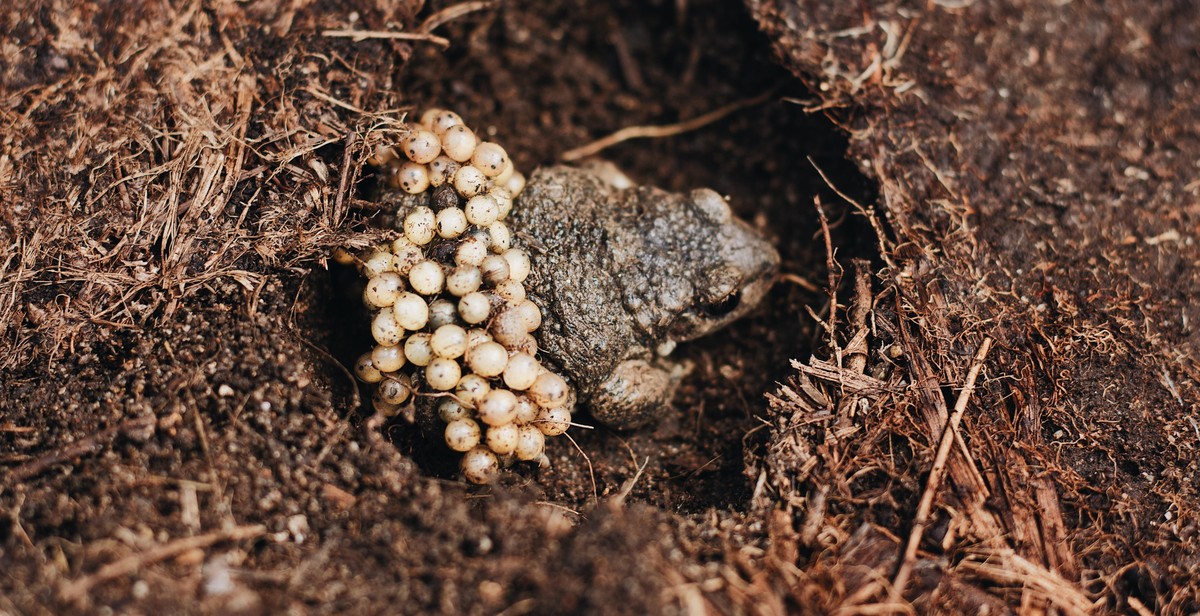How to Identify Common Frog Species: Field Guide for Recognizing Different Types of Frogs
Frogs are fascinating creatures that have captured the attention of nature enthusiasts for centuries. With over 7,000 species of frogs around the world, it can be difficult to identify them all. However, by learning to recognize the most common frog species in your area, you can gain a deeper appreciation for these creatures and their unique characteristics.
Why Identify Frog Species?
Identifying different frog species is important for several reasons. Firstly, it helps us to better understand the biodiversity of our environment. Secondly, it can aid in conservation efforts by providing insight into which species are present in a particular area and how their populations are faring. Finally, recognizing different types of frogs can make for a more enjoyable and educational outdoor experience.
The Challenge of Identifying Frogs
Identifying frog species can be challenging due to their similarities in appearance and behavior. However, by paying attention to key characteristics such as color, size, and habitat, it is possible to differentiate between different types of frogs. This field guide will provide you with the information you need to confidently identify some of the most common frog species in your area.
What You Will Learn
In this guide, we will cover the most common frog species found in North America and their identifying features. We will also discuss the habitats and behaviors of these species, as well as tips for finding and observing them in the wild. By the end of this guide, you will be able to recognize and appreciate the unique qualities of each frog species you encounter.

Why Identify Frogs?
Identifying frogs may seem like a trivial task, but it is actually a crucial step in conserving these amphibians. Frogs are an important part of the ecosystem and play a vital role in maintaining the balance of nature.
The Importance of Frog Conservation
Frogs are not just cute little creatures that hop around in the garden. They are an important indicator of the health of the environment. As amphibians, they are sensitive to changes in their habitat and are often the first to be affected by pollution, climate change, and habitat destruction.
According to the International Union for Conservation of Nature (IUCN), around 40% of amphibian species are threatened with extinction. This is a worrying statistic as frogs are an important part of the food chain and their loss could have a devastating impact on the ecosystem.
Frogs as Bioindicators
Frogs are bioindicators, which means they provide valuable information about the health of the environment. As they breathe through their skin, they are susceptible to pollutants in the air and water. Changes in their behavior or population can indicate pollution or other environmental problems.
By identifying different frog species, scientists can monitor their populations and track changes in their behavior. This information can be used to identify potential threats to the environment and take action to prevent further damage.
Education and Awareness
Identifying frogs is not just important for scientists and conservationists. It is also a great way for the general public to learn about the environment and the importance of conservation. By understanding the different types of frogs and their habitats, people can become more aware of the impact they have on the environment and take steps to reduce their ecological footprint.
Furthermore, by identifying frogs and learning about their behavior, people can develop a greater appreciation for these amazing creatures. This can lead to increased support for conservation efforts and a greater willingness to take action to protect the environment.
Conclusion
Identifying frogs is an important step in conserving these amazing creatures and protecting the environment. By understanding the different types of frogs and their habitats, we can learn about the impact we have on the environment and take steps to reduce our ecological footprint. So, the next time you see a frog, take a moment to identify it. You never know what you might learn!

Frog Anatomy: Physical Characteristics to Look For
In order to identify different frog species, it is important to understand their physical characteristics. Here are some of the key features to look for:
Skin
Frogs have smooth, moist skin that is covered in mucus. This skin helps them to absorb oxygen and stay hydrated. Some species of frogs have rough or bumpy skin, while others have brightly colored skin with patterns that help them to blend in with their surroundings.
Eyes
The eyes of a frog are located on the sides of its head and are large and bulging. This gives them excellent peripheral vision, allowing them to spot predators coming from any direction. Some species of frogs have horizontal pupils, while others have vertical pupils.
Ears
Frogs do not have external ears, but they do have a middle ear and inner ear. These ears are located behind the eyes and are covered by skin. They are sensitive to sound waves and allow the frog to hear the calls of other frogs.
Legs
Frogs have long, powerful hind legs that are used for jumping and swimming. Their front legs are shorter and are used for grasping and holding onto prey. Some species of frogs have webbed feet, which help them to swim more efficiently.
Mouth
The mouth of a frog is located at the front of its head and is wide and flexible. Frogs do not have teeth, but they do have a bony plate in the roof of their mouth that is used for crushing and grinding food.
Internal Organs
Like all vertebrates, frogs have a complex system of internal organs. Their digestive system includes a stomach and intestines, while their circulatory system includes a heart and blood vessels. They also have a respiratory system that allows them to breathe through their skin.
Coloration
The coloration of a frog can vary widely depending on the species. Some frogs are brightly colored, while others are more drab. Some species can change color to blend in with their surroundings.
| Physical Characteristic | Importance for Identification |
|---|---|
| Skin | Can indicate species, habitat, and behavior |
| Eyes | Size, shape, and color can help identify species |
| Ears | Can indicate species and sex |
| Legs | Length, shape, and webbing can help identify species |
| Mouth | Shape and size can indicate diet and behavior |
| Internal Organs | Not visible, but important for understanding frog biology |
| Coloration | Can indicate species, habitat, and behavior |
By understanding the physical characteristics of different frog species, you can become a better frog watcher and identify the frogs you encounter in the wild.

Identifying Common Frog Species
If you are an avid nature enthusiast or a biologist, you must be curious to know how to identify common frog species that you might come across in the field. Frogs are fascinating creatures with unique characteristics, and identifying them requires some knowledge and practice. In this section, we will go through some of the most common frog species and how to recognize them.
Green Frog
The Green Frog is a common species found in North America, with a distinctive green color on its back and sides. It has a white belly and a prominent eardrum behind the eye. The Green Frog’s call is a deep, resonant “jug-o-rum,” which can be heard from a distance. This species is often found near water bodies, such as ponds, lakes, and rivers.
Bullfrog
The Bullfrog is the largest frog species in North America and is easily identifiable by its deep, resonant call that sounds like a bull. It has a green or brown color with dark spots on its back and a white belly. The Bullfrog has a prominent eardrum behind the eye and is often found near water bodies such as swamps, ponds, and slow-moving rivers.
American Toad
The American Toad is a common species found in North America, with a brown or gray color and a white belly. It has distinctive warts on its back and a prominent eardrum behind the eye. The American Toad’s call is a high-pitched trill, which can be heard during the breeding season. This species is often found in woodlands and gardens.
Gray Treefrog
The Gray Treefrog is a small species of frog found in North America, with a gray or green color and a white belly. It has distinctive yellow-orange patches on its thighs and a prominent eardrum behind the eye. The Gray Treefrog’s call is a trill, which can be heard during the breeding season. This species is often found in trees and shrubs.
Spring Peeper
The Spring Peeper is a small species of frog found in North America, with a brown or gray color and a white belly. It has distinctive dark X-shaped markings on its back and a prominent eardrum behind the eye. The Spring Peeper’s call is a high-pitched peeping sound, which can be heard during the breeding season. This species is often found near wetlands and swamps.
Pickerel Frog
The Pickerel Frog is a small species of frog found in North America, with a distinctive black and brown coloration on its back and a white belly. It has bright yellow-orange patches on its inner thighs and a prominent eardrum behind the eye. The Pickerel Frog’s call is a low-pitched snore-like sound, which can be heard during the breeding season. This species is often found near water bodies such as ponds, lakes, and streams.
| Frog Species | Distinctive Features | Habitat | Call |
|---|---|---|---|
| Green Frog | Green color, prominent eardrum | Near water bodies | “Jug-o-rum” |
| Bullfrog | Largest frog species, deep call | Near water bodies | Resonant “jug-o-rum” |
| American Toad | Brown or gray color, warts on back | Woodlands and gardens | High-pitched trill |
| Gray Treefrog | Gray or green color, yellow-orange patches on thighs | Trees and shrubs | Trill |
| Spring Peeper | Brown or gray color, X-shaped markings on back | Near wetlands and swamps | High-pitched peeping sound |
| Frog Species | Physical Characteristics | Behavior | Habitat |
|---|---|---|---|
| Green Tree Frog | Bright green color, white underbelly, and red eyes | Can climb trees, jumps long distances, and has a distinct trilling call | Found in trees near water bodies and vegetation |
| Bullfrog | Olive green color with brown spots, large eardrums, and webbed feet | Can jump long distances, swims well, and has a deep, resonant call | Found near water bodies, such as ponds, lakes, and streams |
| Spring Peeper | Tan or brown color with a dark X on their back, small size | Can climb trees, jumps short distances, and has a high-pitched peeping call | Found near water bodies, such as swamps and marshes |
With this field guide and tips, you’ll be able to identify common frog species in no time. Remember to always be respectful of their habitats and never disturb them in the wild.

